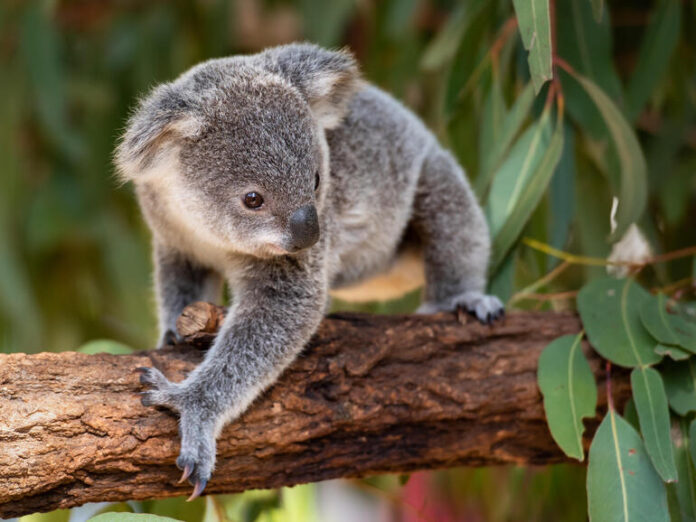“Early on it was getting [all kinds of] false positives. So, it would call kangaroos a koala. It would call people koalas. It would even call a hot car engine a koala,” a researcher said.
A number of researchers are leveraging a vast suite of technologies to assist with wildlife and land conservation efforts around the globe. This includes tracking bears in western Canada with facial recognition capabilities and predicting US wildfires with deep learning. In Australia, a team at Queensland University of Technology (QUT), are taking a tech-savvy approach to koala detection and protection using artificial intelligence (AI), drones, thermal imaging, and machine learning (ML).
Protecting the iconic and elusive koala
From perils of the fur trade to habitat loss due to land development, koalas have faced myriad existential threats. In recent years, the effects of climate change have exacerbated the species’ vulnerabilities. For example, it’s been estimated that more than 5,000 koalas died as a result of the brushfires that scorched Australia between 2019 and 2020, and, without proper protection, a New South Wales (NSW) Legislative Council determined that koalas could be extinct in the state by midcentury.
“Koalas [are] an iconic Australian animal. They don’t occur anywhere else in the world, and we need to understand how many of them are actually out there in the bush, but we don’t know, and that’s because they’re hard to find,” said Grant Hamilton, associate professor of ecology at QUT who also leads this research effort.

Grant Hamilton associate professor of ecology at QUT who also leads this research effort.
Image courtesy of QUT
Researchers have used a number of methods to count koalas ranging from acoustic detection to counting fecal pellets with canine assistance, Hamilton explained, but, historically, the most accurate approach involves a team of people walking transects under the canopy and counting koalas individually. But this labor-intensive boots-on-the-ground approach misses many of the koalas in the field. Research demonstrated that experts are only able only to spot about three out of four the koalas in a given area.
To increase the efficiency and accuracy of koala counts, Hamilton and his team developed a methodology that uses drones, thermal cameras, and AI. At first, Hamilton said that using a drone that flies overhead to detect an animal that lives high in a canopy seemed like a bit of a “no brainer,” but this tech-enhanced approach presented a number of challenges.
“It’s not like the koalas sitting at the top of the tree. They’re nestled in this three-dimensional complex vegetation,” he said.
To sift through these drone-collected thermal images and assist with identification the team developed machine learning algorithms, but training these models also came with a bit of a learning curve, Hamilton explained.
“Early on it was getting [all kinds of] false positives. So, it would call kangaroos a koala. It would call people koalas. It would even call a hot car engine a koala,” Hamilton said.

To enable an algorithm to differentiate a thermal image of a koala from, say, an idle pickup truck, the model needs a quality dataset of images. Unfortunately, this niche slice of photography had not produced a large pool of helpful data for the team to use.
“There’s a billion images of cats on the internet, so if you wanted to train a machine learning algorithm and find cats, you’d be fine. There are not many thermal images of koalas taken from a drone,” Hamilton said.
Since the team did not have such a stockpile of photos, it had to develop its own catalog of thermal koala images, Hamilton explained, and then the team then used fine-tuning to enhance the accuracy of these algorithms.
“We could generally train the algorithm towards animals and then fine-tune it towards koalas. So, whereas most machine learning algorithms use hundredss of thousands of images to train, we only needed a few hundred,” Hamilton said.
After extensive training and development, Hamilton said the AI-enabled methodology is now more accurate than people at detecting koalas. Aside from increased precision, this approach also allows researchers to cover exponentially more ground in less time. Hamilton estimated that a team of four researchers could cover about 10 hectares in a day, and the drone-enabled AI detection method allows them to cover 50 hectares in two hours.

Moving forward, Hamilton said the team is working on processing data in near real-time and “moving into” multi-species detection; the latter of which would enable the team to train an algorithm to detect “multiple animals of interest” rather than limiting each survey to a single species.
Whether it’s a preliminary pool of thermal koala images or implementing a habitation preservation strategy, researchers must first have preliminary data for comparative purposes. This cross-data juxtaposition allows researchers to analyze the impact of conservation efforts and refine these approaches as needed.
“How do we know that our management actions are having any effect at all? Well, we have to be able to count [the koalas]. So, counting these threatened species is fundamental to making sure that we preserve them. Unless we can do it accurately though and efficiently, it’s not going to get done, and that’s the problem at the moment,” Hamilton said.





